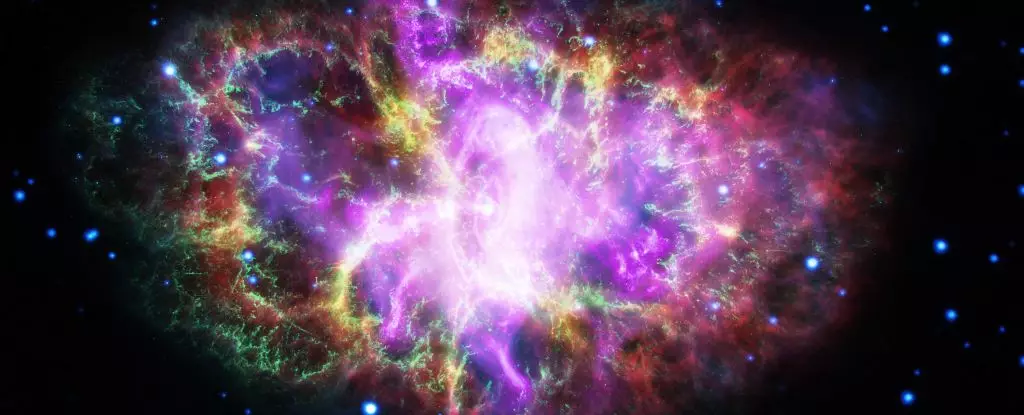On a clear evening in San Diego, the backdrop of my light-drenched backyard created an unexpected arena for cosmic exploration. With my telescope set up, I waited as a stunning cosmic photograph transitioned from the dark void of space to the glowing screen of my tablet. “There it is,” I proclaimed to my wife, Cristina, marveling at the swirling beauty of the Pinwheel Galaxy. This spiraling collection of approximately a trillion stars is not just a visual spectacle; it’s a reminder of the vast dimensions of our universe, and the remarkable journey of light that brings it to our eyes. It struck me how, while we stood discussing this majestic galaxy, its light had traversed a staggering 25 million years, a journey spanning nearly 150 quintillion miles.
Cristina looked puzzled, her eyes wide with curiosity, and asked an innocent yet profound question: “Doesn’t light get tired during such a long journey?” This sparked a dialogue that transcended mere astronomy; it delved into the very nature and behavior of light. Would it tire? Would it lose its energy as it traveled through the vastness of space? As an astrophysicist, I was both thrilled and challenged to explore these ideas—to convey the complexities of light in a manner that ignited fascination rather than confusion.
Beyond Our Intuition: Understanding Light
The nature of light can baffle even those with a scientific background. As it is composed of electromagnetic radiation—the coupling of electric and magnetic waves—it defies our preconceptions. We often think in terms of mass and force, yet light stands apart as it possesses no mass. This fundamental distinction is significant; mass limits the speed at which an object can travel through space. Conversely, because light is massless, it achieves the ultimate speed limit in a vacuum, soaring at nearly 186,000 miles per second.
To grasp the true magnitude of this velocity, imagine this: in the fleeting blink of an eye, light could circle the Earth more than twice. Yet, despite this incredible speed, the universe is an immense expanse. For instance, the Sun—just 93 million miles away—sends its light to us in a brief journey of eight minutes. The next closest star, Alpha Centauri, exists a staggering 26 trillion miles away, meaning its light has been traveling for over four years by the time we perceive it. Each flicker of a star is a relic of time, a ghostly whisper from the past.
The Journey of Light: Energy and Movement
After pondering Cristina’s inquisitive challenge, it became clear that while some light does lose energy—encountering objects like interstellar dust most notably—much of it journeys through space unscathed. The vast majority of space is devoid of obstructions, creating a seemingly limitless highway where light can maintain its extraordinary pace without losing vigor or velocity. This raises essential questions about the permanence of light’s brilliance: If it can traverse space for millennia without fatigue, does this suggest anything about the essence of existence itself?
To deepen our understanding, we considered the concept of time dilation. Imagine an astronaut aboard the International Space Station, where time ticks slightly slower than on Earth due to the velocity of orbit and proximity to a gravitational field. This relativity of time could further enhance our perspective on light. If one could hypothetically travel just below—if not at—the speed of light, the experience of time would dramatically alter. The distinction between past, present, and future could blur in ways that seem unfathomable.
Imagine riding a photon, the fundamental light particle. From this unique vantage point, time would appear to freeze, and distances would compress, rendering the journey from a distant star to Earth incredibly brief. The implications of this phenomenon spark delightful contemplation: a photon leaving its cosmic home may perceive an infinitesimal moment passing between radiant birth and earthly capture.
The Discussion Unfolds: Science Meets Curiosity
In the vibrant interplay of our conversation about the Pinwheel Galaxy, we see a merging of science and wonder. It’s one of those moments where teaching expands beyond textbooks and theories into a shared experience. I found joy in crafting an insightful dialogue that intertwined the complexity of astrophysics with Cristina’s genuine curiosity. It encouraged her to think beyond the surface and engage critically with the universe’s mysteries.
As I sat back, observing the delicate interplay between light and the cosmos, I realized that these profound revelations resonate deeper than mere scientific facts; they connect us to the universe itself. With every twinkle of a star that illuminates our night sky, we are invited to experience the beauty of curiosity, discovery, and the ceaseless journey of light. Such moments reaffirm that even in an era dominated by science, the fundamental mysteries of the universe remain a source of profound fascination, reminding us all that questions can illuminate understanding as brightly as the stars.


Leave a Reply